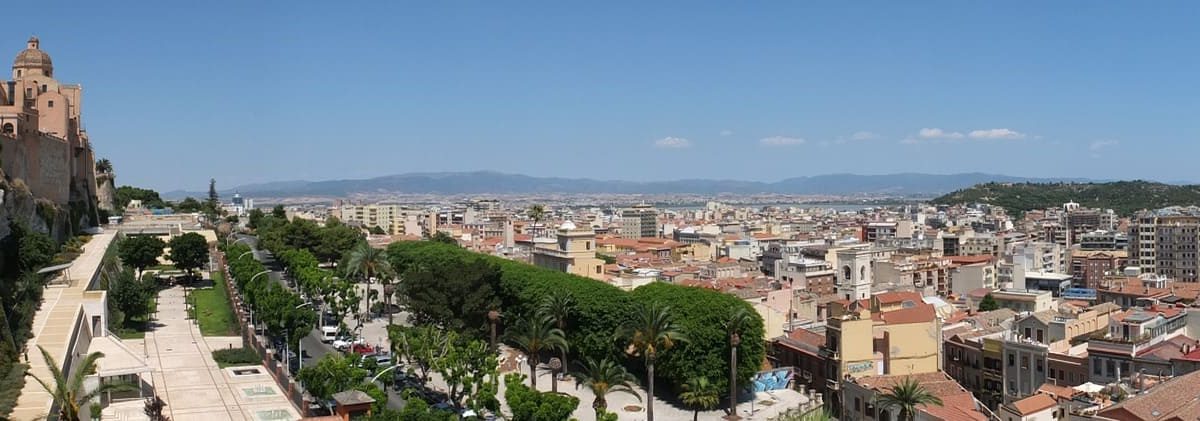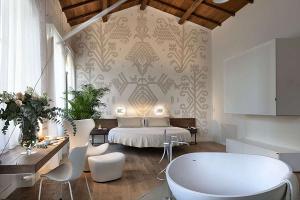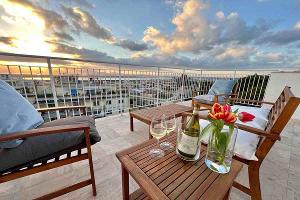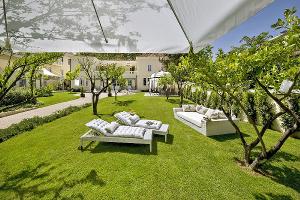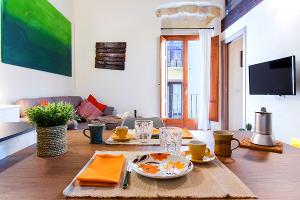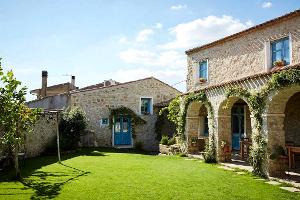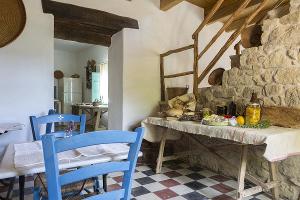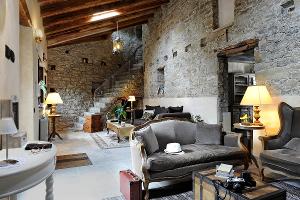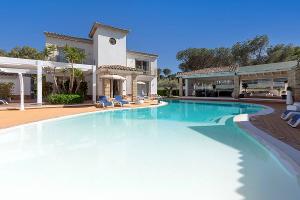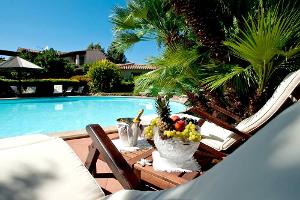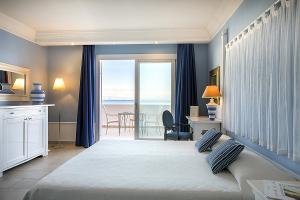The city of walls, of the Elephant Tower and the Devil’s Saddle, the capital of Sardinia. Cagliari, born above the hills, is the perfect destination from which to discover its surroundings that are still too little talked about.
What better time than winter? Certainly not a renowned area for skiing activities given the Mediterranean climate, but it is the perfect season to visit the city and discover some wonderful places in its surroundings.
If you have already explored Cagliari sufficiently and want to get to know its surroundings better, we suggest 10 places near Cagliari to see in winter and Christmas season as a suggestion to celebrate your holidays in an unusual and new way, coming into contact with authentic places and an original culture.
Why visit the Cagliari area in winter
Not everyone likes the bitter cold and those winters when you dread setting foot outside your home. If you are one of these types of travellers, discovering the surroundings of Cagliari in winter is what you have been unexpectedly waiting for.
The local climate makes for mild winters: there has not been a snowfall worthy of the name since 1993 (the last century, to be precise). It’s not a particularly rainy season and indeed, it can provide beautiful days when you can see people entering the water wearing Santa hats (and why not, you might even join the Santa Claus beach crew).
Each season has its typical dishes not to be missed, impossible to experience fresh at other times of the year. The winter around Cagliari is renowned and appreciated for sea urchins to be tasted only with a spoon, on a crostino or as a condiment for spaghetti that will make your taste buds dance. It’s well known that discovering Sardinia out of season like this has a whole new flavour!
Visit with us 10 places you absolutely cannot miss during your winter holiday around the sun-kissed Cagliari.
1. San Sperate
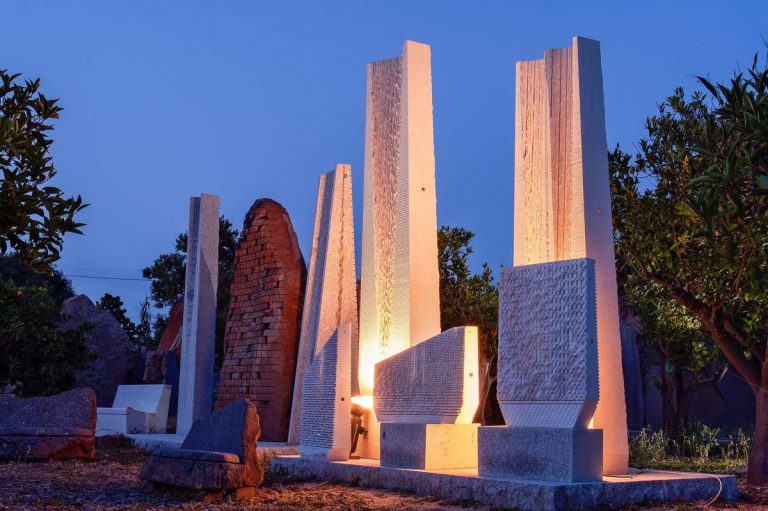
San Sperate is a museum town with a strong identity also due to its artistic wealth. Surrounded by beautiful orchards, it is known for its festivals but, most of all, for two reasons that have made it famous nationally and internationally.
The first reason can be seen as you stroll through the streets of the town, where every corner tells stories to those with the soul to understand them: the spectacular murals in the area will take you on an unusual journey, to discover an art that echoes throughout the island.
Here, street art with a revolutionary character was brought by the great Sardinian artist, Pinuccio Sciola, who paved the way for the second reason that makes San Sperate one of the ten places to visit in winter near Cagliari: its “Giardino Sonoro” with its sounding stones, or better: large sculptures made of limestones or basalts that alter their appearance when touched by humans.
Once his workshop, it is now the heart of what he left behind after his passing. This open-air museum houses some of the works that have made Pinuccio Sciola the emblem of the Sardinian artist, craftsman and creative artist who makes us proud of this island.
His sounding stones are proof of how it is not so much the richness of a material that counts as the mental richness of a human being who put all his genius into creating something innovative, thus adding an important page to the great book of Sardinia.
2. Discover local museums
If the weather doesn’t smile on you one day, make sure it doesn’t take your smile away. Winter is definitely the perfect time to visit the local museums, indoors, protected by the ceiling and the grandeur of the local artwork. Apart from the important museums in the city of Cagliari, if you want to take a trip to the hinterland, you cannot miss the Museo Civico of nearby Sinnai and its historical archive, where artistic discovery and knowledge are combined with the didactic purpose pursued by this reality. If the weather improves, we recommend a walk in the lush municipal pine forest.
3. Pranu Mutteddu
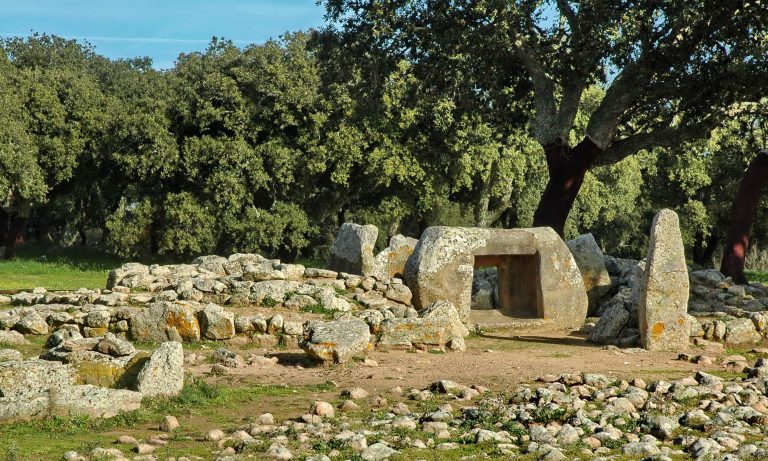
But, as already mentioned, there will be very few bad days ahead. Winter is a great time to discover some of the most beautiful archaeological sites in southern Sardinia, including Pranu Muttedu in the municipality of Goni.
The entire area of this vast park has a necropolis from the pre-Nuragic period that has provided scholars with numerous objects and evidence of the past thanks to excavations that took place there in the 1980s.
Numerous menhirs have been found, suggesting that sacred and burial rites were performed in this area, surrounded by oak forests that are now centuries old.
4. Costa Rei
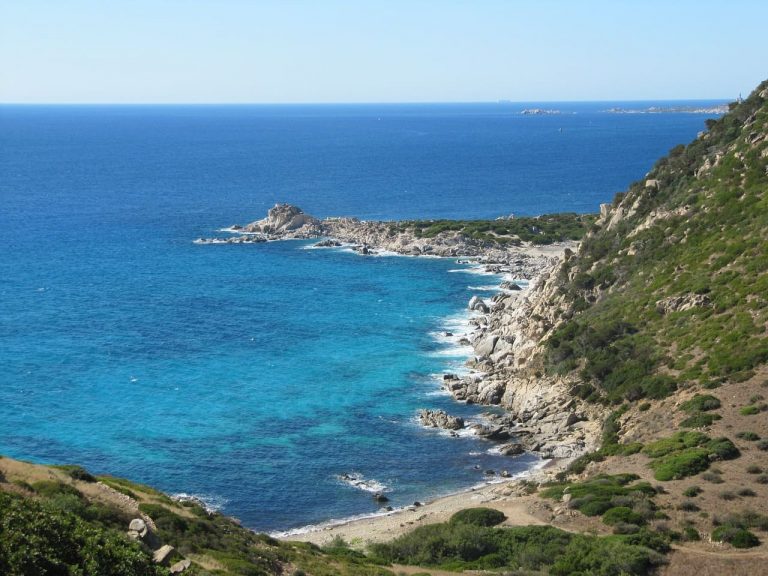
Who said that beaches are only fulfilling in summer? Certainly the experience offered is different, but no less intriguing and fun. Costa Rei in winter offers breathtaking landscapes that can be enjoyed thanks to the low season. Beyond the local sea, for refreshing swims, and walks to be enjoyed serenely with bare feet on the sand, the lively nearby town of Muravera is a little gem to be discovered.
Take the opportunity to visit the Capo Ferrato lighthouse overlooking the sea. Close your eyes and breathe in the pure, fresh and invigorating winter air.
5. Tomb of the Giants Is Concias, Quartucciu
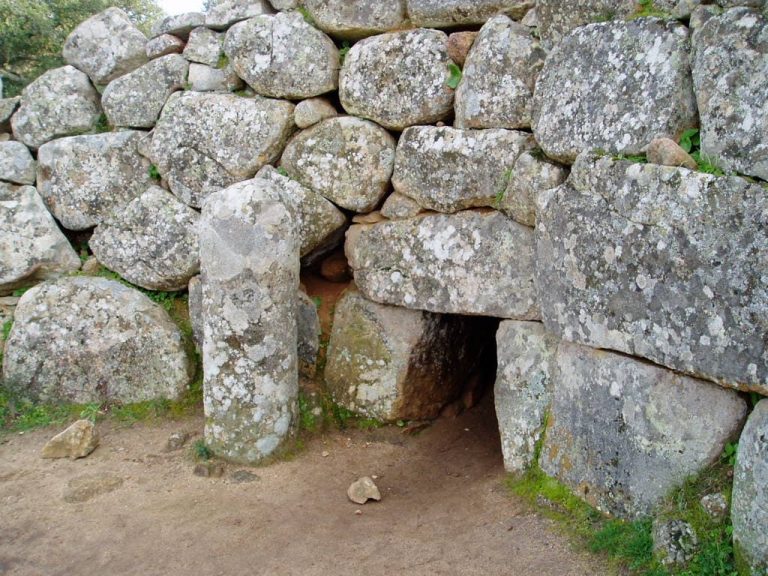
Early in the morning, a sumptuous breakfast in a b&b in Cagliari will prepare you for a visit to the Tomb of the Giants Is Concias, an archaeological site located on the Seven Brothers mountains (“Sette Fratelli”) at an altitude of about 350 metres. Also known as ‘Sa Domu ‘e s’Orku’ (the house of the ogre), it was used as a collective burial area. In the area in front of the entrance, a granite betile, probably representing an ancient deity, was found during excavations that began in 1962, and can now be seen on the right side of the entrance.
Take something good to eat with you because the walk in this area is very rewarding but requires energy.
6. Nora
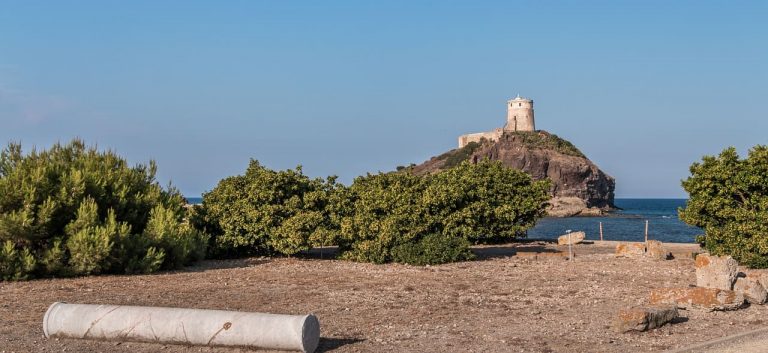
Sardinia is an island that for centuries has attracted populations across the sea that have made this region what it is today from a traditional, cultural and identity point of view. One of these civilisations, which strongly influenced Sardinia, was undoubtedly the Phoenicians. There are many island testimonies, first of all the beautiful Nora near Pula. Here you can admire the remains of an ancient Phoenician city dating, in all likelihood, from between the 5th and 3rd centuries B.C., which later fell into Roman hands.
The archaeological site of Nora is rich in mosaics, some of them still intact, and has Roman baths and a theatre where the population used to meet and share moments of leisure.
Once you have finished visiting this ancient city, you can move on to the Torre del Coltellazzo, which overlooks the crystal-clear local sea.
7. Sardara Thermal Spa
An hour and a half’s drive from Cagliari through soft hills and green landscapes to treat yourself to a day of pure wellness. In Sardara, you will find some of the most renowned spas in Sardinia where you can pamper yourself with treatments of all kinds. Just outside the town, you can visit the enchanting Gothic church of Santa Maria Aquas. Waters were already known to the ancient Romans who built baths there that are not visible today.
One of the most evocative religious festivals in southern Sardinia is dedicated to Our Lady of the Waters.
8. Monastir, Sant’Antoni de su fogu
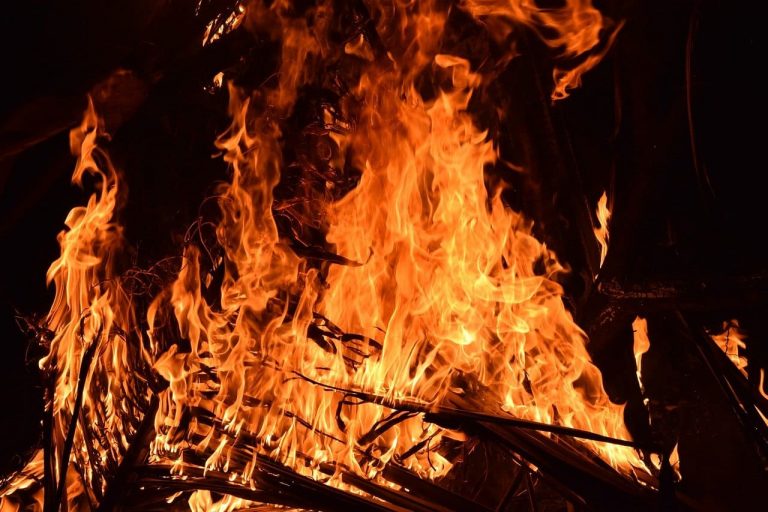
An ancient island legend, taking its cue from the story of Prometheus who was guilty of hybris by defying the gods, tells of a man, Saint Anthony the Abbot, who travelled to the gates of the underworld and stole fire, mocking the devil himself in order to give it to human beings who did not know the benefits of this element.
Whether one believes this myth or not matters little, it has given us the Fires of Saint Anthony (Sant’Antoni de su fogu): winter events (mid-January) in which bonfires reign supreme. A religious festival that attracts people of all faiths (or non-beliefs) to share the festive atmosphere, which differs from village to village.
One such locality is certainly Monastir, some 20 km from Cagliari, where the celebrations do not last a single night as in other countries, but an entire week.
In addition to the miraculous, hot bonfire, the statue of the saint is paraded up to the church on the town’s hill, a symbol of salvation following a heavy flood that occurred, it seems, in the 19th century.
If you happen to be in Monastir for this occasion, do not miss a visit to the Baratuli Castle, a fortress built in the 12th century on Mount Oladri to defend the surrounding territory.
9. San Pietro Island
Another unmissable stop during your winter holiday is the Island of San Pietro with its beautiful Carloforte. The Island of the sparrow hawks, as it was called by the Punic people, offers splendid, seasonless views, to be experienced year-round while gazing at the horizon that grows deeper and bluer.
San Pietro’s only inhabited centre is the small town of Carloforte. You can arrive by ferry, which will be uncrowded given the seasonal period, and you can stroll serenely through the village of small colourful houses, stairways adorned with seedlings and sea scents. We are not just talking about the sea breeze itself, but the aromas coming from the local restaurants where fresh fish can never be missed, even in winter.
A village frozen in time where you can admire the ancient walls and some important local buildings such as the Church of the Madonna degli Schiavi, which has a statue that is very dear to the people of Carloforte.
10. Barumini

Barumini: a small town, many opportunities for your unusual but fun winter holiday. Of immense archaeological value is the Casa Zapata Museum Centre, named after the family of the same name that erected a building, Casa Zapata, at the end of the 16th century.
This place is unique because it combines the 17th-century civil architecture of the house with a much more ancient artistic manifestation: a nuraghe that was rediscovered thanks to work started in 2005 to renovate the Zapata building: su Nuraxi ‘e Cresia (the Nuraghe of the Church). Here you can also visit the Regional Museum of the Launeddas, a Sardinian instrument to discover and listen to.
A place where education and fun meet is definitely Sardegna in miniatura. This area not only contains a miniature copy of the island, which you can walk through feeling like a gentle giant discovering a new land, but also has other areas including the Nuragic pavilion, where the main places of the villages have been reconstructed, a nature park where you can feel reunited with the surrounding nature and, for those who grew up with the Jurassic Park films, the dinosaur area!
Is this the end of the thematic areas to visit? Absolutely not, but we think the dinosaurs are interesting enough to convince you to discover the rest as well. A great option for spending the Christmas holidays with your family.
Last but not least, the reason why Barumini is internationally known: the nuragic complex of Barumini, Su Nuraxi. An archaeological site that became a UNESCO heritage site in 1997.
It was Giovanni Lilliu who pioneered the excavations in this area in the middle of the last century and a cultural centre built near the archaeological site is dedicated to him where exhibitions and events are held throughout the year.
The Nuragic complex covers quite a large area and probably the first stone was laid there in the 16th century B.C. but was frequented, it is thought, until the early Middle Ages.
This ancient village is a symbol of ancient local history that will leave you speechless. Before you miss them all, however, you can make a wish to see this archaeological site painted white by snow. A miracle to ask Santa Claus for Christmas, we’ll keep our fingers crossed for you!
 it
it de
de nl
nl en
en fr
fr
